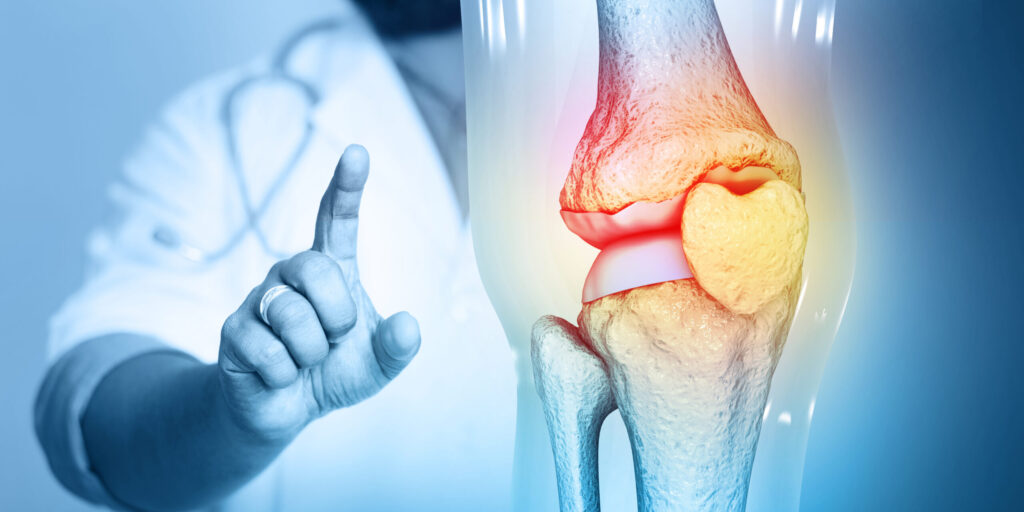
Can Neuromuscular Disease Affect Your Bones?
By Myrna Traylor | Friday, May 10, 2024
5 Second Summary
If you’re concerned about your bone health, read on for the three main factors that contribute to low bone density and osteoporosis for people with neuromuscular diseases, and what to do to protect your bones.
If you have a neuromuscular disease, it is important to pay attention to your bone health. While neuromuscular conditions mainly affect muscles and nerves, common symptoms and treatments can increase the risk of developing osteoporosis, a condition in which bones become weak and brittle. This leads to an increased risk of fractures (broken bones).
What causes bone loss?
Three major factors contribute to bone loss and low bone density, a sign of developing osteoporosis, in people with neuromuscular diseases:
1. Glucocorticoid therapy: Medications such as prednisone and deflazacort are glucocorticoids, a class of corticosteroids. These medications are considered the standard of care for Duchenne muscular dystrophy (DMD), and they are often used to treat autoimmune neuromuscular diseases, such as myasthenia gravis (MG) and dermatomyositis. However, long-term use of corticosteroids interferes with the way bones form and reform, making bones more fragile.
“In the first six to 12 months of treatment, the steroids can stimulate something called osteoclastic activity, which is the bone breaking down,” says Heba Al-Rayess, MD, an endocrinologist at the University of Minnesota Medical School, Greg Marzolf Jr. Muscular Dystrophy Center, and M Health Fairview Masonic Children’s Hospital. Osteoclastic activity is part of a normal cycle where the body breaks down old bone tissue. Osteoblastic activity builds new bone tissue to replace it.
“With ongoing steroid treatment beyond one year, there is a marked decrease in bone formation. The osteoblastic, or bone-building, activity gets suppressed with chronic steroid use,” Dr. Al-Rayess says.
2. Inactivity: Neuromuscular diseases cause progressive muscle weakness, often leading to difficulty walking and standing. This is especially impactful for children who are still growing.
“Weight-bearing activities on bones, especially growing bones, really help stimulate bone development and increase bone health,” says Jason J. Howard, MD, an orthopedic surgeon at Nemours Children’s Health in Wilmington, Delaware. “That’s why we encourage things like standing, even for kids who don’t walk well, through the use of supportive standers and other aids.”
3. Nutrition: Proper nutrition — specifically, adequate levels of vitamin D, calcium, and protein — helps the body build strong bones. This might be a particular problem for people who have difficulty swallowing or are on gastric feeding tubes, but it’s of concern to everybody in the community. “All kids and adults with neuromuscular diseases should be on regular vitamin D and calcium supplementation,” Dr. Howard says.
Do you need osteoporosis screening?

Heba Al-Rayess, MD, is an endocrinologist.
X-rays and DEXA scans are used to measure bone density (the thickness and strength of bones) to screen for osteoporosis. (You may also hear providers mention osteopenia, which is the initial stage of bone loss. Osteoporosis is more advanced.)
For adults at average risk, osteoporosis screening generally begins around age 65. People with neuromuscular diseases should ask their care team what’s recommended for them based on their risk factors. They may need to start much earlier.
“After a child is diagnosed with muscular dystrophy or starts on steroids, we order a DEXA scan every year and a spine X-ray every two years,” Dr. Al-Rayess says.
Osteoporosis screenings are usually ordered by the patient’s endocrinologist. If an individual does not have access to an endocrinologist, they should ask about getting these screenings through their primary care provider or neurologist.
“If we find that a patient has low bone density and evidence of fracture, we start treatment with a bisphosphonate,” Dr. Al-Rayess says. Bisphosphonates work by slowing the body’s process of breaking down bone.
According to Dr. Al-Rayess, there is discussion in the medical community about starting bisphosphonates as a preventative treatment for people with neuromuscular diseases. “But there’s not enough evidence yet to recommend that routinely for everyone,” she says.

Jason J. Howard, MD, is an orthopedic surgeon.
Coping with fractures
When bones become fragile, fractures are more common in the long bones, such as the femur (thigh bone) or humerus (upper arm bone), and in the vertebrae (spine). These fractures, besides being painful, can impact mobility in the short and long term.
Dr. Howard points out that as a disease progresses and walking becomes more difficult, trips and falls are more common. Unfortunately, fractures caused by injury can further limit mobility.
“For example, I might encounter a child with DMD who’s still able to walk but has underlying bone weakness as a result of their functional level, and they are also taking steroids,” he says. If that child fell and broke their leg, Dr. Howard would treat it with the goal of getting the child back on their feet quickly, sometimes with surgery. “Just a short time off their feet can risk losing their walking ability prematurely, particularly if they were precarious walkers to start with,” he says.
Dr. Howard also explains the importance of watching for small fractures that occur without an obvious injury. “One problem commonly encountered by children and adults with DMD and spinal muscular atrophy (SMA) is vertebral compression fractures,” he says. “With normal activities over time, the bone crunches down, which might cause pain or not. Often, the only way to see if that’s happening is by doing an X-ray of the spine.”
If you’re concerned about your bone health, look for endocrinologists, orthopedists, and other healthcare providers who are familiar with neuromuscular diseases through MDA Care Centers or other institutions. “Having that knowledge is important to help maintain potential mobility and independence,” Dr. Howard says.
Next Steps and Useful Resources
- It’s important to follow a healthy meal plan while on prednisone or deflazacort. Learn more in the Quest article Nutritional Considerations While on Corticosteroids.
- Need more movement in your life? Learn how people in the neuromuscular disease activity stay active.
- Stay up-to-date on Quest content! Subscribe to Quest Magazine and Newsletter.
TAGS: Featured Content, Healthcare, Nutrition, Web Exclusive
TYPE: Featured Article
Disclaimer: No content on this site should ever be used as a substitute for direct medical advice from your doctor or other qualified clinician.




